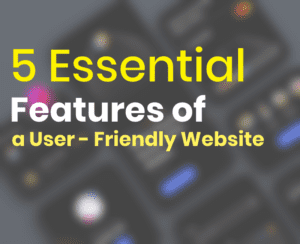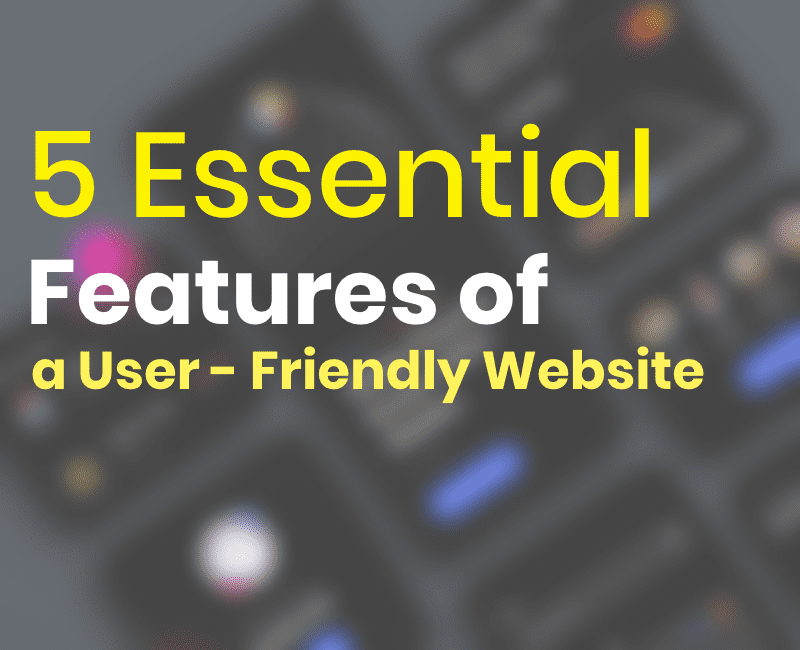
Ever visited a website and had a negative experience?
It’s possible that the navigation was challenging to use or that your device prevented it from rendering correctly. Perhaps there were graphic loading difficulties, or it even felt old.
If you’re like the majority of customers, that user experience probably had an impact on how you felt about the business in general. In truth, you may have gone with a rival who had a more expert website.
It is essential for businesses to maintain this kind of experience in mind.
Why? Your website’s appearance is crucial to your success in digital marketing, and some errors might seriously affect your brand’s reputation.
We’ve gathered 12 things you should be aware of while creating a user-friendly website to assist you in avoiding this. Let’s get going.
A user-friendly website is…
A professional-looking, simple-to-navigate website is one that appeals to all website visitors, even those who have accessibility requirements.
Usability is the concept underlying this procedure, which simply implies that the website is easy to use and leads visitors to the appropriate information as quickly as feasible.
Often, this is what establishes the tone for all subsequent interactions with your target audience, and if the experience is negative, it may easily cause them to run away.
What are the top 5features of a website that is user-friendly?
Have you heard the proverb that says when it comes to digital marketing, content is king? Usability is queen, which supports that statement.
Because people won’t stick around to engage with your message if they can’t find what they’re looking for on your website.
Here are a few qualities to think about in order to give you an idea of what areas you should look at when figuring out if your website is user-friendly.
Optimal Navigation
Effective navigation is one of the key elements of a user-friendly website. Whichever design you choose, it’s critical that it enables guests to go where they need to go quickly and effectively.
Compatibility with Mobile
Nowadays, there’s a lot more possibility than there used to be that someone will visit your website on a smartphone or tablet instead of a laptop. As a result, every feature on your page need to work across a variety of screen sizes.
Simple Content Design
To learn more about a subject, isn’t it the main reason someone would visit your website? This is why having a clear content architecture is crucial.
An individual is much more likely to spend more time on a website if they can find relevant content quickly and effectively.
Specific Call-to-Action Information
A call-to-action is evident on user-friendly websites. Your visitors are considerably more likely to follow through with the following steps when they can plainly see what they are. An example might be a button that leads to a phone number or contact form where a session may be scheduled.
Quick loading
Website visitors don’t want to be kept waiting while your page loads.
Fast load speeds have a significant influence on SEO in addition to being essential for the user experience.
If you discover that yours is lagging, you could think about hiring a specialist web developer to examine your coding and check for flaws like excessively huge graphics or background code that prevents displaying.
The problem might also be with your web provider, in which case you might need to select a better hosting plan to eventually reduce site load times.
7 tips for creating a user-friendly Website
Here are some extra suggestions to help you stay on the right path while keeping in mind the five factors we just highlighted.
1.Choose a website design that prioritizes the user
It’s not about what will work best for your team while designing a website. Choose a design approach that prioritizes the demands of the user instead.
It is simpler to identify potential problems or areas where the user experience isn’t the best when you adopt this approach as your ultimate objective.
2.Use Language and Tone that is Accessible
Use language and tone that is understandable to your target audience as another suggestion.
Why does this matter? It is a good idea to have a version of your website in that dialect if the majority of your clients do not understand English.
Additionally, it’s crucial to maintain particular attitudes or cultural overtones in your language.
3.Pick Your Colors Smartly
The psychology of color choice is very important.
Our brains are wired to identify various colors with particular traits nearly from infancy. Red, for instance, represents rage, and green, wealth.
When creating a user-friendly website, pick color schemes that represent the principles of your company.
4.Simplify Online Forms
The effectiveness of your online forms is crucial to the user-friendliness of your website. After all, if a person spends the time to fill one out, they probably need a follow-up in a matter of seconds.
Make sure your forms are easy to use, functional, and route to the right person to fulfill the request, whether that be an automatic download, a customer care specialist, a member of the sales team, or someone else.
5.Upgrade Your Website’s Layout
Improving the general look of your website is the first step to creating a user-friendly one if it is outdated or hasn’t been updated in a while.
This entails looking over and finding instances where new technology and/or ideas regarding website building have evolved after your first launch.
Additionally, you may conduct a poll among your present clients to find out which parts of your website they believe prevent them from having a better experience.
6.Keep Mobile-Friendly in Mind
Mobile-friendliness is essential for the entire user experience as well as being a significant factor in SEO (SEO).
Both Google and your visitors want a website that renders properly and is simple to use on mobile devices. Therefore, be sure to prioritize this in your design.
7.Bear in mind psychology
Finally, while creating a user-friendly website, be sure to keep fundamental psychology in mind. When it comes to browsing a page, most individuals are used to a few specific aspects.
For instance, the menu is often up at the top, while the terms of service and privacy policy information are typically found in the footer.
If you’re unsure of where to begin with this, look at some of your favorite pages or even rival websites to see how they’ve applied the essentials of site architecture.
in order to conclude:
Building a user-friendly website is critical if you want your brand to be recognized as a reliable source in your field.
Moreover, getting your target audience to take action requires having a page that makes it simple to identify those next opportunities, whether that’s filling out a form or making a phone call.
You should be able to improve your current design and create one that visitors enjoy using the tips we’ve provided here.
Do you want to boost the overall quality and experience of your website?
Please contact us right away via http://gm.pulseconnect@gmail.com or on our fiverr account https://fr.fiverr.com/pulse_connect








